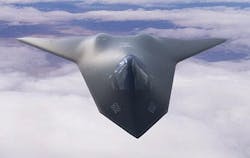Hybrid theory: Lockheed Martin and Boeing pitch upgraded F-22 and F-15 jet fighter
The Military & Aerospace Electronics take:
27 Nov. 2018 -- In 2016, the Air Force issued its Air Superiority 2030 strategic plan for the next 15 years of air combat capabilities, which included a call for developing a penetrating counter-air (PCA) aircraft to replace or augment F-22 and F-15 jet fighters.
Essentially, the military wanted a fighter capable of surviving in an advanced, hostile environment while taking out enemy aircraft and air defenses and acting as a node in the network, providing data from its penetrating sensors to enable employment using either stand-off or stand-in weapons. The U.S. Navy is looking at similar capabilities for its carrier-based air operations.
The F-35 Lightning II is not an air-superiority fighter aircraft. While it can dabble in that role, it was intended to be a strike fighter -- a fighter-bomber workhorse meant largely to take on ground targets and defend itself as necessary.
Related: Air Force focuses on upgrades to the F-22 jet fighter that will complement future F-35
Related: Lockheed Martin pitching U.S. Air Force on F-22-F-35 hybrid fighter intended for Japan
John Keller, chief editor
Military & Aerospace Electronics
Ready to make a purchase? Search the Military & Aerospace Electronics Buyer's Guide for companies, new products, press releases, and videos

